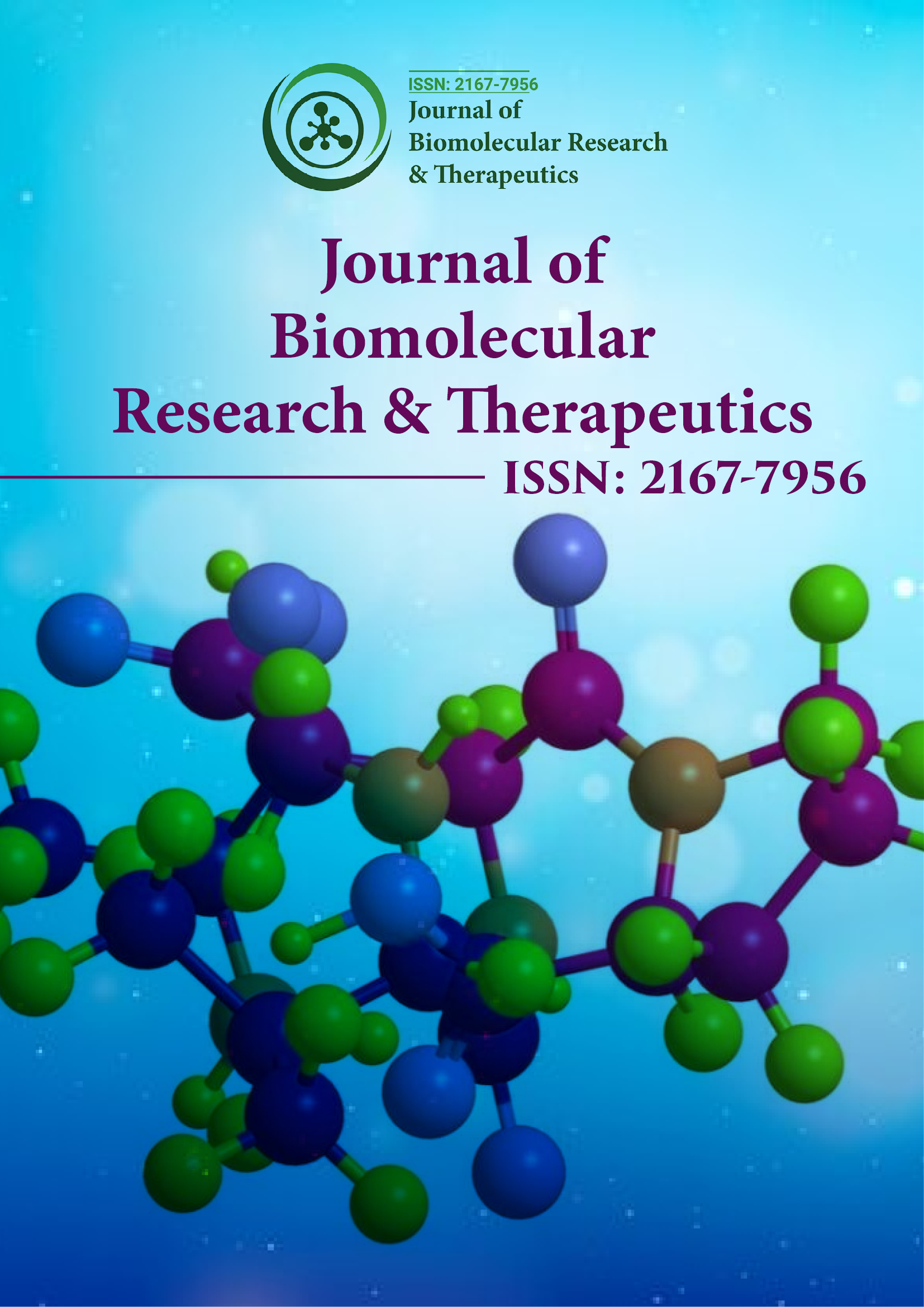Indexed In
- Open J Gate
- Genamics JournalSeek
- ResearchBible
- Electronic Journals Library
- RefSeek
- Hamdard University
- EBSCO A-Z
- OCLC- WorldCat
- SWB online catalog
- Virtual Library of Biology (vifabio)
- Publons
- Euro Pub
- Google Scholar
Useful Links
Share This Page
Journal Flyer

Open Access Journals
- Agri and Aquaculture
- Biochemistry
- Bioinformatics & Systems Biology
- Business & Management
- Chemistry
- Clinical Sciences
- Engineering
- Food & Nutrition
- General Science
- Genetics & Molecular Biology
- Immunology & Microbiology
- Medical Sciences
- Neuroscience & Psychology
- Nursing & Health Care
- Pharmaceutical Sciences
Commentary - (2025) Volume 14, Issue 2
Exploring RNA-Based Therapeutics for Genetic Disorders
Yuki Nakamura*Received: 28-Mar-2025, Manuscript No. BOM-25-29592; Editor assigned: 31-Mar-2025, Pre QC No. BOM-25-29592; Reviewed: 14-Apr-2025, QC No. BOM-25-29592; Revised: 19-Apr-2025, Manuscript No. BOM-25-29592; Published: 28-Apr-2025, DOI: 10.35248/2167-7956.25.14.431
Description
In recent times, RNA-based therapies have transitioned from theoretical innovations to practical clinical solutions, revolutionizing how we manage and treat diseases at the molecular level. A notable advancement in this field is RNA editing technologies particularly ADAR-mediated systems that enable accurate modifications of RNA transcripts without altering the DNA blueprint. This method presents a potentially safer and reversible alternative to permanent gene-editing tools like CRISPR, making it especially valuable in addressing disorders caused by specific point mutations. The regulatory environment is gradually evolving to support these innovative therapies. Health authorities are beginning to establish clearer frameworks for the approval and oversight of RNA-based medicines, reflecting the growing recognition of their safety and therapeutic promise. Moreover, the integration of Artificial Intelligence (AI) and machine learning into RNA drug research is accelerating the development process, enhancing predictions of RNA-target interactions and helping identify potential drug candidates more efficiently.
RNA therapeutics stand out as a novel class of treatments that intervene at the genetic source of disease. Unlike traditional drugs that typically interact with proteins, RNA-based therapies influence gene expression by targeting messenger RNA (mRNA) or non-coding RNA molecules. This allows for the correction of genetic defects and the modulation of critical biological pathways involved in disease. A key innovation in this space is the use of Antisense Oligonucleotides (ASOs). These are synthetic strands of nucleic acids designed to bind to specific RNA sequences, thereby adjusting splicing events or preventing protein translation. For instance, ASOs have been successfully used to treat Spinal Muscular Atrophy (SMA) by correcting abnormal RNA splicing, restoring the production of functional proteins and offering a breakthrough for previously untreatable conditions. This success has laid the groundwork for ASO therapies in other rare genetic disorders. Small interfering RNA (siRNA) represents another important RNA modality. These molecules leverage the body’s natural RNA interference (RNAi) mechanisms to silence harmful genes. For example, siRNA therapies approved for hereditary transthyretin amyloidosis significantly reduce the production of toxic proteins, showcasing the potential of siRNA to treat various genetic, metabolic and neurological conditions through precise gene silencing.
Messenger RNA (mRNA) vaccines gained global prominence during the COVID-19 pandemic, demonstrating rapid development timelines and robust immune responses. These vaccines, which deliver genetic instructions for producing antigens directly into cells, avoid the complexities of protein manufacturing and offer a scalable, adaptable platform. Their success has also sparked interest in applications such as cancer immunotherapy and personalized vaccines. Beyond protein-coding RNAs, researchers are now investigating the potential of long non-coding RNAs (lncRNAs). Although these molecules do not encode proteins, they play essential roles in regulating gene activity, chromatin structure and cell differentiation. By targeting lncRNAs, scientists hope to develop new strategies to treat complex diseases like cancer, fibrosis and autoimmune disorders, expanding the therapeutic landscape.
Despite these advancements, challenges persist, particularly regarding RNA stability and targeted delivery. RNA is naturally fragile and vulnerable to enzymatic degradation, necessitating the use of protective delivery vehicles such as Lipid Nanoparticles (LNPs). Progress in nanotechnology has greatly improved how RNA drugs are delivered, ensuring they reach the correct tissues. Ongoing efforts are aimed at enhancing tissue-specific delivery, using approaches like ligand-conjugated nanoparticles and exosome-based systems to minimize side effects and maximize efficacy. Another key concern is the potential for RNA molecules to stimulate immune responses. To address this, researchers have introduced chemical modifications such as pseudo uridine and 2'-O-methylation to reduce immunogenicity while maintaining therapeutic function. Finding the right balance between efficacy and safety is critical as RNA therapies begin to address chronic illnesses and immunologically sensitive conditions.
With genomic sequencing becoming more accessible and the field of personalized medicine expanding, RNA-based drugs are expected to play a central role in precision healthcare. Their adaptability allows them to be customized for individual genetic profiles, making them suitable for rare genetic disorders, emerging infectious diseases and various forms of cancer. Moreover, the speed at which RNA therapeutics can be designed and produced positions them as ideal candidates for responding to new and evolving health threats. The expanding pipeline of RNA medicines highlights their growing importance in modern medicine. Continued progress in delivery technologies, target identification and clinical translation will likely solidify RNA therapeutics as a cornerstone of future medical practice offering highly specific, personalized treatment options that transcend the capabilities of traditional small molecules and biologics.
Citation: Nakamura Y (2025). Exploring RNA-Based Therapeutics for Genetic Disorders. 14.431
Copyright: © 2025 Nakamura Y. This is an open access article distributed under the terms of the Creative Commons Attribution License, which permits unrestricted use, distribution and reproduction in any medium, provided the original author and source are credited

